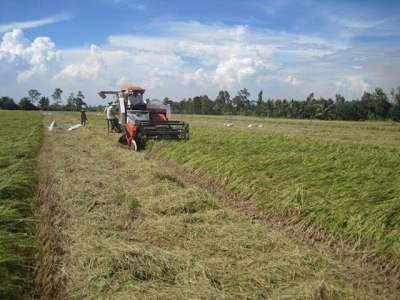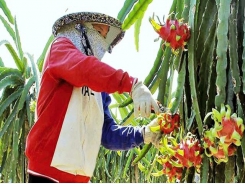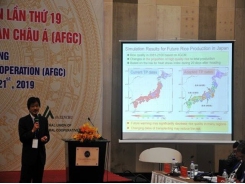China no longer largest rice buyer of Vietnam

CAN THO – China imported more than 9,500 tons of Vietnamese rice during the year up to February valued at some US$4.5 million, sharply declining by over 95% in both volume and value, prompting it to drop from first to seventh place among Vietnam’s largest rice importers, according to data from the General Department of Vietnam Customs.
Local farmers are harvesting rice in the Mekong Delta. China is no longer the largest buyer of Vietnamese rice – PHOTO: TRUNG CHANHLocal farmers are harvesting rice in the Mekong Delta. China is no longer the largest buyer of Vietnamese rice – PHOTO: TRUNG CHANH
In previous years, the volume of rice shipped to the neighboring country had accounted for at least 35% of Vietnam’s rice export turnover.
Some local rice traders and exporters told the Saigon Times that the sharp decline of rice exports to China was mainly ascribed to its tightening control over unofficial rice imports from across the border, alongside the tax hike of up to 50%.
Nguyen Van Don, director of Viet Hung Co., Ltd, stated that China would adopt more stringent measures to control the rice import volume from Vietnam and other ASEAN countries from this year.
To be eligible to enter China, local rice exporters must meet several requirements.
The rice bound for China must be sterilized for 120 hours; rice samples must be sent to Chinese agencies for testing; rice packaging and labels must display full information on product origins in line with international practices; and products must display the testing facilities’ verification stamps. Failure to comply would result in refusal of the exports, remarked Don.
Nguyen Ngoc Nam, chairman of the Vietnam Food Association and general director of Vietnam Southern Food Corporation, shared Don’s viewpoint, stating that these stringent requirements from China had reduced the rice volume export from Vietnam to the neighboring country.
During the January-February period, customs statistics also showed that Vietnam had exported over 710,000 tons of rice, with export revenue exceeding US$300 million, dropping some 14% in volume and 23% in value.
The Philippines had advanced to the top post, replacing China, having imported almost 315,000 tons of rice from Vietnam, worth more than US$125 million, up some 80% in volume and 60% in value, followed by the Republic of Côte d'Ivoire, Malaysia and Hong Kong.
Vietnam’s export rice price plunges
The current export price of 5% broken rice now averages out at US$348 per ton, down by US$72 year-on-year, and US$32 below the figure from five years ago, with inflation not taken into account, according to the Vietnam Food Association.
The future of local rice exports may be gloomy as the rice supply recorded on the global market remains relatively high, causing rice prices to drop sharply.
Prof. Vo Tong Xuan was quoted by Thanh Nien Online as saying that this year’s rice exports will likely confront obstacles. The Philippines, one of the two largest rice buyers alongside Indonesia, will not import a large volume of rice this year due to its high rice inventory.
In addition, 180 rice traders in the Philippines that were licensed to freely import rice from foreign countries have been prevented from doing so as the country has hiked its import tariff to 35% to encourage domestic rice production. Indonesia also has an adequate rice stockpile.
Meanwhile, China and India are offering an inventory-clearance sale for their rice stockpiles at highly competitive prices, which has increased the pressure on rice exporters as rice prices continue to drop. Rice prices may bounce back once the two countries have emptied their rice reserves, but it is not a good forecast for the long term, said the professor.
Có thể bạn quan tâm
Phần mềm

Phối trộn thức ăn chăn nuôi

Pha dung dịch thủy canh

Định mức cho tôm ăn

Phối trộn phân bón NPK

Xác định tỷ lệ tôm sống

Chuyển đổi đơn vị phân bón

Xác định công suất sục khí

Chuyển đổi đơn vị tôm

Tính diện tích nhà kính

Tính thể tích ao hồ



 Cracking the paradox of the cashew sector
Cracking the paradox of the cashew sector  Wet rice farming increases greenhouse emissions: expert
Wet rice farming increases greenhouse emissions: expert